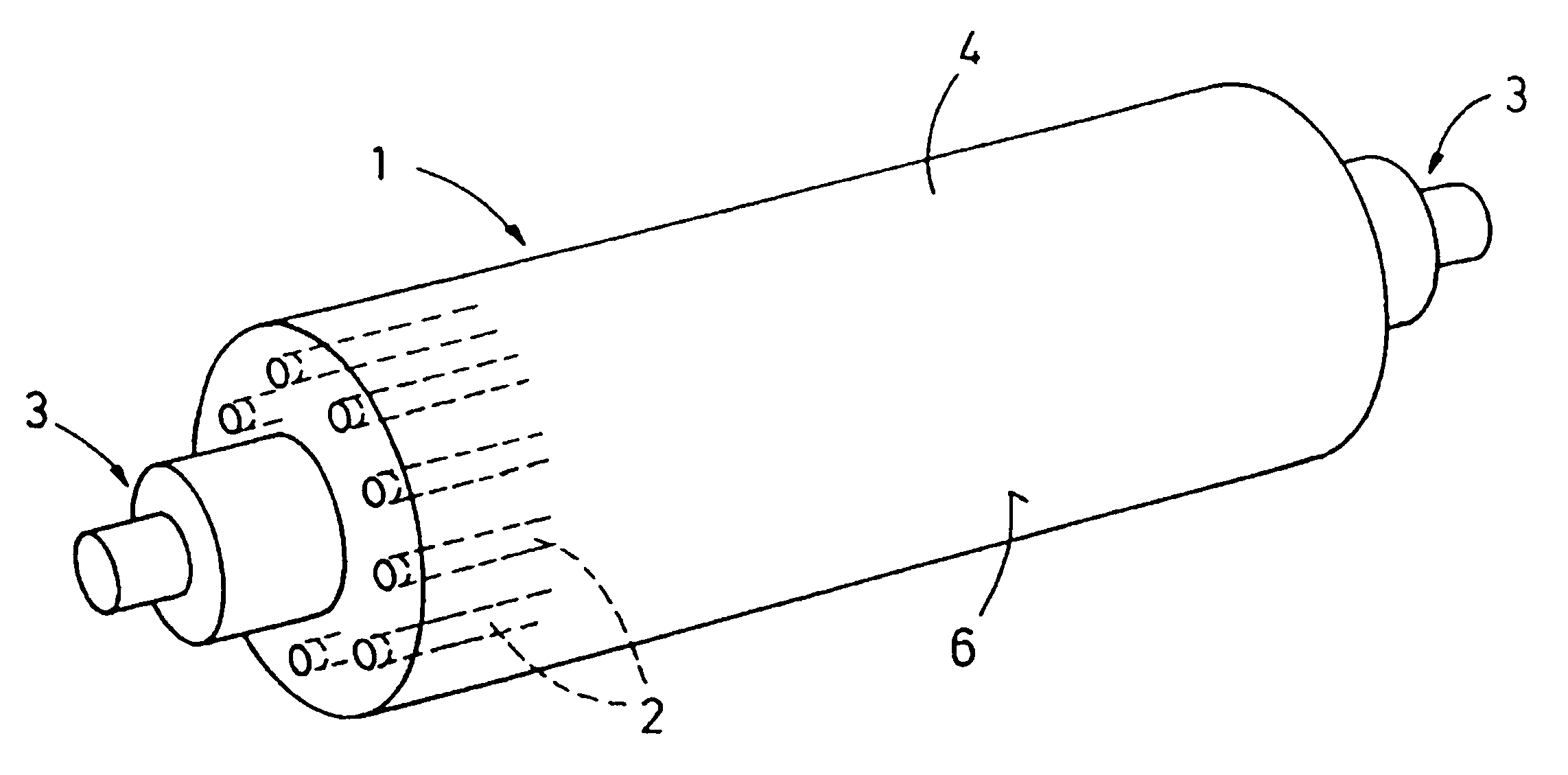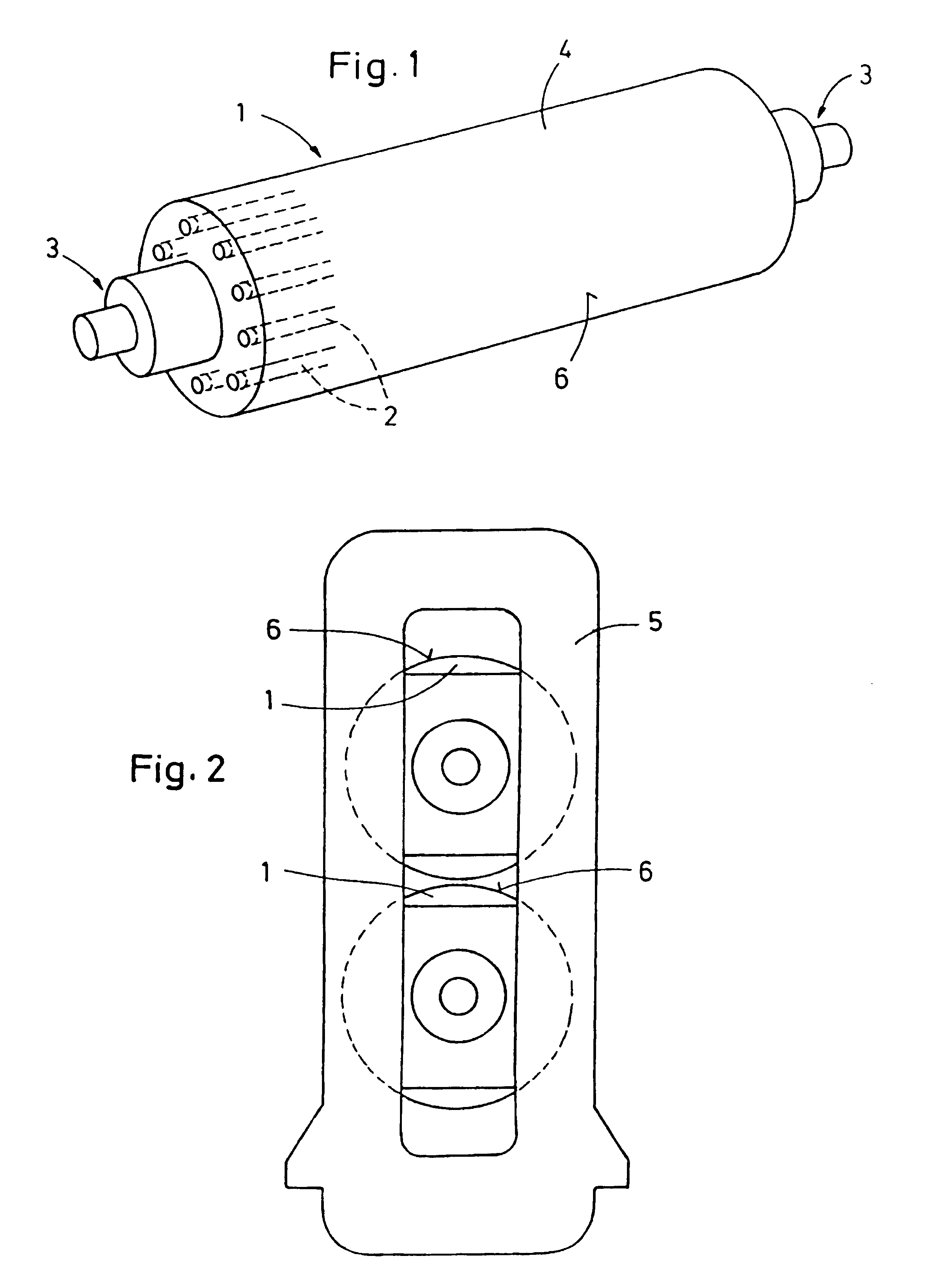Roll, in particular, calender roll
- Summary
- Abstract
- Description
- Claims
- Application Information
AI Technical Summary
Benefits of technology
Problems solved by technology
Method used
Image
Examples
Embodiment Construction
[0018]In the illustrated embodiment, a heatable roll 1 with inner bores 2 is illustrated. The bores 2 extend axially and are provided for guiding a heating medium through during operation (paper making) and during manufacture of the roll 1. The heating medium can be a pre-heated fluid such a heat carrier oil, water or steam. The bores 2 can be provided, for example, in the mantle of the hollow-cylindrical roll 1.
[0019]For clamping the roll 1, symmetrically formed flange journals 3 are provided which limit the roll body 4 at both ends and which point outwardly in order to be received in bearing eyes of a stand 5.
[0020]Typical paper processing rolls 1, which are used as calender rolls for calendering a paper web, are comprised, for example, of chilled iron, centrifugal casting or also, up to a certain degree, of forged steel. Such materials are inhomogeneous (anisotropic and orthotropic) which, with respect to the shaping precision is particularly problematic. The dimensions of the ro...
PUM
| Property | Measurement | Unit |
|---|---|---|
| Temperature | aaaaa | aaaaa |
| Temperature | aaaaa | aaaaa |
| Temperature | aaaaa | aaaaa |
Abstract
Description
Claims
Application Information
 Login to View More
Login to View More - R&D
- Intellectual Property
- Life Sciences
- Materials
- Tech Scout
- Unparalleled Data Quality
- Higher Quality Content
- 60% Fewer Hallucinations
Browse by: Latest US Patents, China's latest patents, Technical Efficacy Thesaurus, Application Domain, Technology Topic, Popular Technical Reports.
© 2025 PatSnap. All rights reserved.Legal|Privacy policy|Modern Slavery Act Transparency Statement|Sitemap|About US| Contact US: help@patsnap.com


